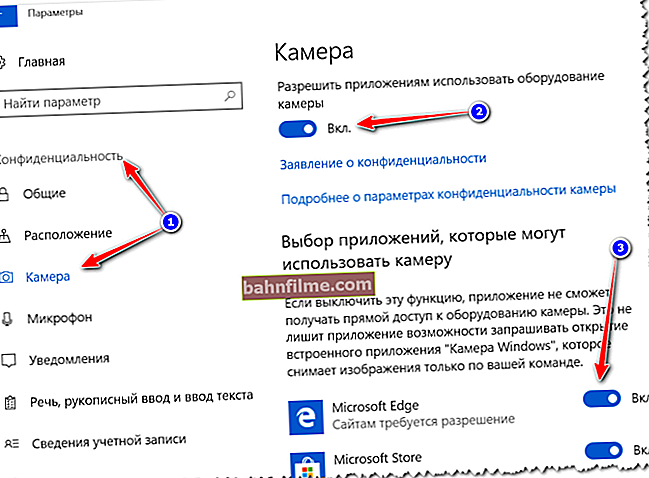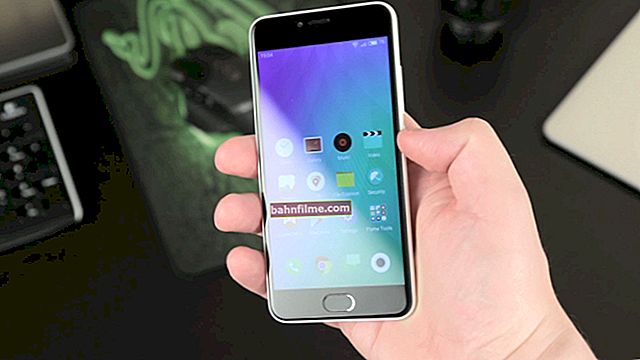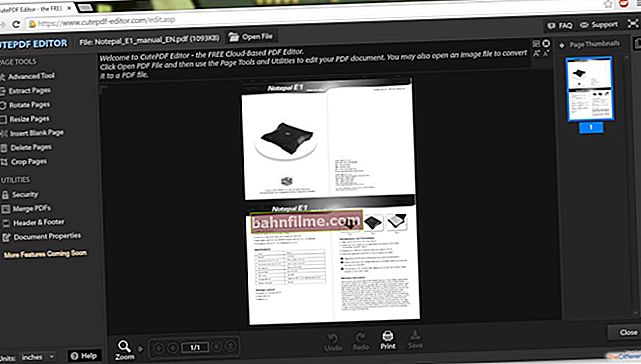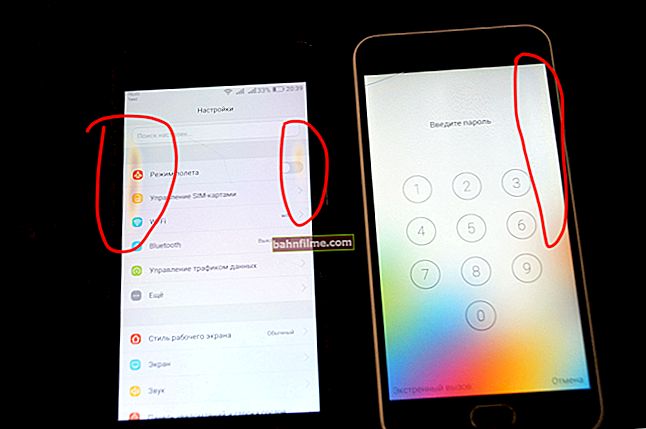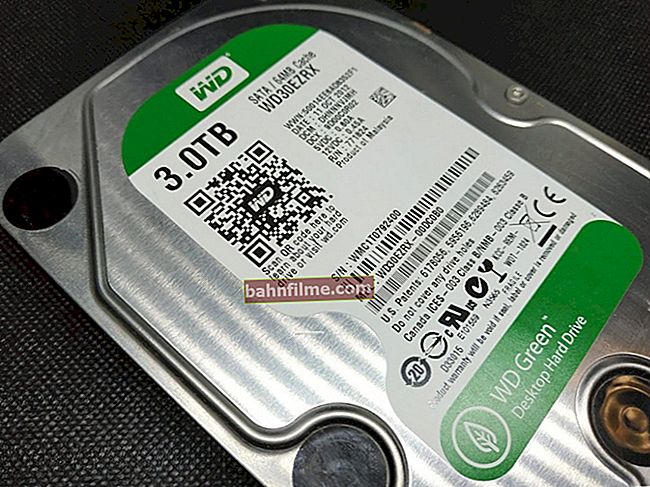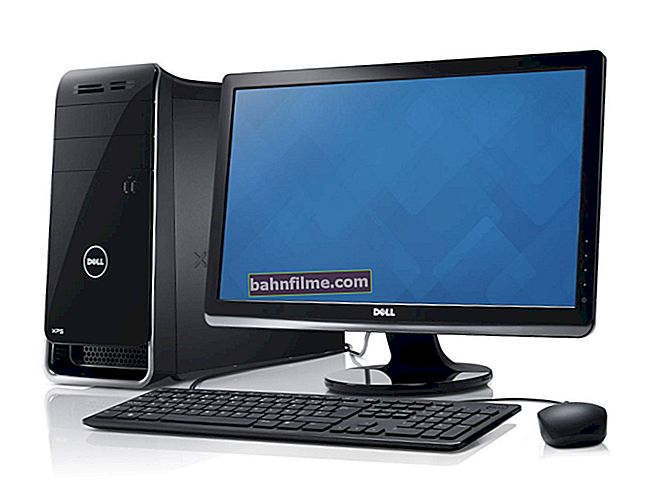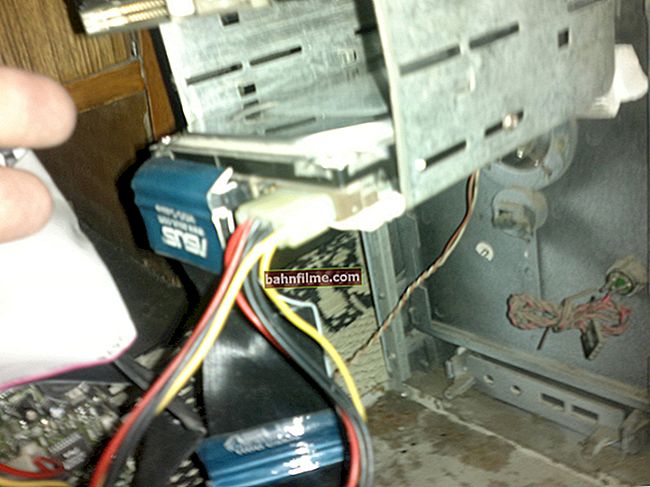
User question
Hello.
I have an Internet tariff of 100 Mbps, and the download speed of torrents on a laptop via Wi-Fi does not exceed 2-2.5 Mb / s. I tried to connect the same laptop to the router with a network cable - the download speed increased up to 8-9 MB / s.
Tell me, is it possible to achieve the same speed over Wi-Fi, how to increase the network speed in general? And it turns out that the speed of the provider is not important to me ...
Hello.
Most likely, the router is too "weak" and simply cannot physically provide a faster mode of operation. For a start, it would be nice to clarify the model and characteristics of the router, as well as the Wi-Fi adapter in the laptop ...
Be that as it may, below I will show how this can be checked, as well as a number of other reasons for a similar problem.
*
What can be done to increase the speed of Wi-Fi
STEP 1: check the signal quality and the power of the router transmitter
And so, for a start, I recommend paying attention to the signal level of the Wi-Fi network - in general, for this it is not even necessary to go into any router settings. It is enough to look at the network icon: if everything is in order with the signal level, you will see all the stripes "filled" (as in the example below).

Signal quality
At all, to the signal strength of the Wi-Fi network the distance between devices, such as a laptop and a router, has a big impact. The further they are among themselves, the lower the exchange rate.
In addition, if there is a wall between the router and the laptop (mirror, door, etc.), the signal quality (and the speed of the transmitted information) can be significantly reduced. When diagnosing and searching for the reasons for slow Wi-Fi operation, try to temporarily put the laptop no further than 2-3 meters from the router.
Well, I still can not help but note one point - most modern routers have specials. option:adjustable signal strength... It is called "TX power" (TX Power, Transmitter power, signal level and other derivatives).
To change the power level of the wireless network - go to the settings of the router, go to the additional tab. Wi-Fi parameters and change the operating mode of the transmitter (below are screenshots of how this is done in devices from TP-Link and D-Link).
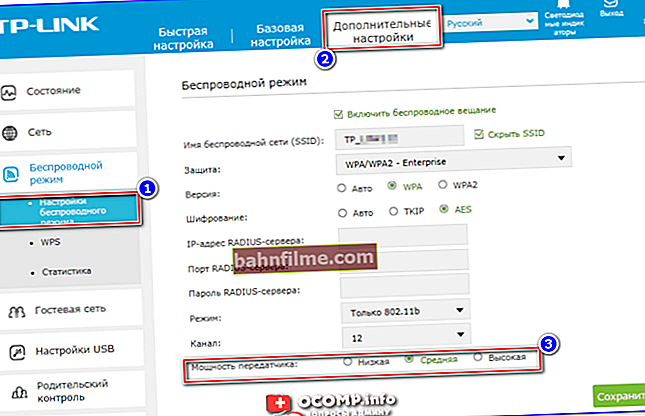
TP-Link - wireless setting (signal strength)

Advanced Settings - TX Power (D-Link)
STEP 2: in what mode does the router work, is it possible to use 5G
Each Wi-Fi network operates in a specific mode (standard). Its bandwidth depends on it. Currently, the most popular networks are based on standards: 802.11ac, 802.11n, 802.11g (see the table below).
| Standard | Year of development | Max. speed (theory) | Average speed (in practice) |
| 802.11a (2.4 GHz) | 2000 | up to 54 Mbps | ~ 20 Mbps |
| 802.11g (2.4 GHz) | 2003 | up to 54 Mbps | ~ 20 Mbps |
| 802.11n (2.4 GHz) | 2010 | up to 600 Mbps (4 antennas) | ~ 60-150 Mbps |
| 802.11ac (5 GHz) | 2014 | up to 6.77 Gbps | 1 Gbps |
| 802.11ax (5 GHz) | 2019 | up to 11 Gbps | ? (2-4 Gbps) |
So, ideally, in the settings of the router, you need to set the most modern standard for today (802.11ac (5 GHz), if your router only works at 2.4 GHz - 802.11n).
An important point: if you have older devices connected to your Wi-Fi network that do not support the 802.11n standard (for example, devices using 802.11g), then the network bandwidth may drop significantly! Therefore, it is highly desirable to manually transfer the router to the most modern standard and connect devices that support it to it.

Wireless (802.11ac) / D-Link router
By the way, to find out on what standard your laptop can work (or more precisely, the laptop's Wi-Fi adapter), you need to open the command line and use the command netsh wlan show drivers .
The line supported types of radio modules will list all the standards that the device supports.

Supported radio module type (netsh wlan show drivers)
If your laptop does not support 802.11ac (802.11n), the issue can be easily resolved by purchasing an external Wi-Fi adapter (now there are models that are no larger than a mini-flash drive).
By the way! Similar adapters are widely available in the online store AliExpress.

Examples of Wi-Fi adapters (2-band, with 5G support)
STEP 3: disable encryption (for weak routers)
If you have a fairly old (weak) router that cuts speed, reboots (while downloading large files, torrents, for example), hangs, etc. - you can reduce the load on it by disabling encryption *.
* The fact is that due to encryption (authentication, etc.), there is a load on the router chip, which weak devices do not always cope with. By disabling encryption, we will reduce the load, and the transmission speed will increase somewhat.
Truth, protection issue I omit it to the background, and this method is only suitable as a temporary measure (for downloading music, movies ... and so on, not particularly important things ...).
Disabled encryption in the web interface of the router in add. Wi-Fi network settings.

TP-Link no protection
By the way, in order not to leave the network unprotected at all, I can recommend adding to the section "MAC Address Filtering" the router only has the addresses of your network cards. Thus, despite the fact that the Wi-Fi network will be open, only those devices that are included in the "white" list will be able to connect to it ...
Note!

MAC address: what it is and where to find it. How to clone the MAC address of an old network card - //ocomp.info/mac-adres-gde-uznat-kak-klonirovat.html
STEP 4: try changing the channel width (by 20 MHz)
In general, it is believed that for the 802.11n (2.4 GHz) standard - to increase the speed of work in a Wi-Fi network, it is necessary to set the channel width to 40 MHz (MHz). Of course, in the default settings of the router, either this width is enabled, or the "auto" mode is set (which also prefers 40 MHz).
But this moment is relevant and only works with a good signal level. Well, if the router is behind two walls and the signal level is not very high, the opposite effect may occur, the access speed drops ...
Based on the foregoing, I recommend that you manually specify the channel width of 20 MHz in the router settings (at least for the duration of diagnostics). Often after that, it was possible to significantly increase the data transfer rate in the Wi-Fi network!

D-Link router settings - manually specify 20 MHz
STEP 5: some more tips for "diagnostics"
- the more devices are connected to the router - the lower the speed on each. Try to connect only 1 device to the router at the time of diagnostics, for example, a laptop;
- check if WPA or WEP encryption is set in the security settings of your router. They are not only outdated, but also tend to load the chip more heavily than the more recent WPA2-PSK;
- the closer the device is to the router, the stronger the signal and the higher the operating speed (as a rule);
- check all the devices connected to the router - are there any "outsiders" among them? (maybe a good neighbor is using your network);
- update the drivers for the Wi-Fi adapter (I came across several times that Windows 10 installs not quite correct drivers that do not allow the adapter to work at its maximum);
- check the network load in Windows OS: it is possible that your channel is "clogged" by downloading some updates for programs you do not need. It is convenient to see what the network is loaded with using the utility NetLimiter (more on this here).
*
That's all for this sim today.
Additions on the topic - welcome ...
All the best!
👋
